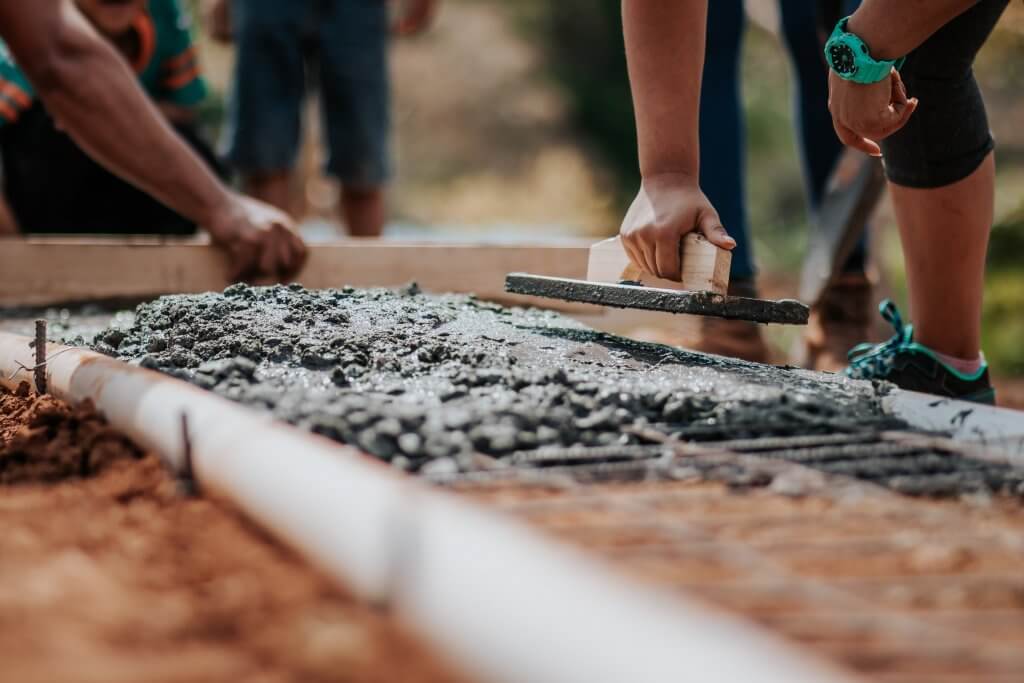Digging foundations is the initial stage in creating any structure or extension, and a foundation or footing is possibly the most important aspect of the entire construction. Your new house, business structure, or expansion will soon exhibit cracks, water leaks, and other damage if it doesn’t have a strong and stable foundation.

Setting footings and pouring concrete is not the same as digging foundations. Different types of foundations are required for different types of buildings, basements, and crawl spaces, and certain foundations may need to be thicker than usual to withstand moisture buildup and support the weight of an overly heavy structure.
Excavation work of any size or sort is not only more precise than you might think, but also quite dangerous. Before you assume that you can do foundation excavation or footing digging on your own, or that you can handle any excavation services or trenching work on your own, consider the following reasons why you should hire a professional excavation contractor instead.
WHAT IS A FOUNDATION’S PURPOSE?
You might think that a foundation’s sole job is to support a structure’s weight. A commercial structure, a home, or even a large shed would sink into the earth or crumble if it didn’t have a good foundation. A foundation, on the other hand, does more than give support and a stable foundation for a structure:
- Moisture is kept out of the structure by the foundations. The wood framework of a home would absorb moisture and soften, crack, split, or allow mold and mildew to grow if it didn’t have a solid foundation made of concrete or another dense and durable material.
- A foundation protects a building from the elements. Even in the summer, the earth beneath a building can be fairly chilly, and wood and paper construction materials can absorb this chill. A foundation acts as a barrier between the structure and the earth, preventing the structure from becoming too cold.
- A sturdy foundation will keep a structure safe from the earth’s movement. The ground beneath a structure can shift, shake, and vibrate for a variety of reasons other than earthquakes. For example, running water, car traffic, and other such disturbances can cause the ground beneath a structure to shift, shake, and vibrate. Such movement could cause a structure’s walls, floors, ceiling, and framework to crack, fracture, and chip if it is not supported by a sturdy and safe foundation.
WHAT ARE THE CHARACTERISTICS OF A GOOD FOUNDATION?
Similar to how a suit should be fitted to the person wearing it, foundations must fit the structure or construction project. The measurements of a structure will be erroneous if the footings are not precise. This inaccuracy may result in off-center windows and other ugly elements in the final appearance of a construction.
The soil characteristics as well as the water tables of the surrounding area must be taken into account when digging a stable foundation. Because very damp or too arid soil may not provide adequate support for a foundation, the concrete may need to be thicker and stronger. Stronger foundations may be required for heavy constructions, such as homes with stone floors and countertops.
THE REASONS WHY FOUNDATIONS FAIL
A foundation should be able to last for decades, if not forever! However, not all foundations are as strong and durable as others, and some may develop serious cracks and chips over time. Take note of the following typical causes of foundation failure so you can avoid them when digging foundations and having new footings poured for your structure:
- The water that collects in the backfill around a foundation is excessive. Water is carried by clay and nonorganic matter, which is then absorbed by concrete foundations. Excessive water pressure puts a strain on foundations, producing leaks and cracks.
- It is not possible for a foundation to cure adequately. Too many excavation contractors speed through a construction project, beginning work on the structure before the foundation concrete has fully hardened. Wrapping cement in plastic traps moisture along its surface, and then allowing it to sit for many days before constructing over it ensures that the concrete is as resistant as possible before this work begins.
- Not properly compacting the foundation’s base. To prevent concrete from seeping into the earth, a foundation is usually poured atop a crushed stone basis. However, if the gravel is not properly tamped and compacted, the concrete may still sink into its nooks and crannies, shifting and cracking the concrete.
- It is not necessary to pour the foundation all at once. Although concrete takes several days to cure correctly, it begins to dry almost immediately after it is put. If a concreter decides to return back the next day after interrupting the pouring of a foundation, a joint or seam may form between the two poured sections. This seam can allow moisture to enter in between concrete parts, causing the foundation to shift, slump, or break.
At Buffalo Excavation Pros, we provide you with a professional excavation contractor for all excavation services in Buffalo. For any inquiries, please contact us and we will be delighted to assist you.
Copyright © Orlando Pet Sitting
